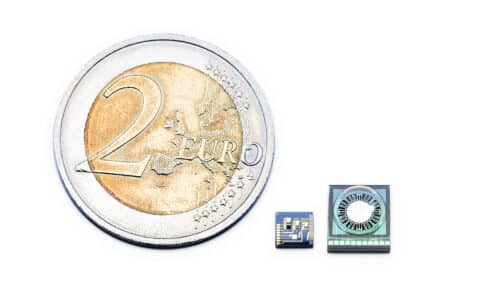The mirror scans in two directions, saves power, adjusts its view, and fits into small devices—built for flexible, low-power optical systems.

The HYPERION Evaluation Kit is a compact 2D optical scanning solution built around the HYPERION BubbleMEMS Mirror. This 1.3 mm diameter MEMS mirror supports a flexible diagonal Field of View from 15° to 70°, with scan frequencies of approximately 35 kHz and 19 kHz using multi-interlaced laser scanning. It is designed for high-speed operation in a small footprint, making it suitable for integration into space-constrained systems.
At the core of the kit is the UltraDRIVE electronics system, developed in-house. It includes custom Drive and Sense ASICs optimized for lead-free piezoelectric MEMS mirror architecture. These ASICs feature effective energy recovery and precise synchronization, ensuring efficient and accurate operation even in complex scanning tasks. The system also uses patented vacuum packaging and Lissajous scanning technology to deliver stable, high-resolution performance.
These features provide several advantages. The scanning range and frequency flexibility allow for adaptable optical designs without changing hardware. The high-speed performance enables faster image capture or signal detection. UltraDRIVE’s energy recovery reduces overall power consumption, and its precise timing controls support high-accuracy applications. Vacuum sealing further improves mechanical stability and protects the mirror from environmental wear.
Some of the key features of the HYPERION Evaluation Kit include:
- 1.3 mm MEMS mirror for small-size scanning
- Field of View can change from 15° to 70°
- Scans at around 35 kHz and 19 kHz speeds
- Uses special electronics made in-house
- Saves power with energy recovery system
- Vacuum-sealed for long-lasting use
- Works with 3 to 5 volts power supply
As a result, the HYPERION Evaluation Kit supports the development of compact, power-efficient devices such as wearables and portable sensing tools. Its automatic power-up and wide 3–5V input range make system integration easier while helping to extend battery life. With accurate scanning, low power needs, and strong durability, it enables reliable performance across various use cases including augmented reality, biomedical devices, and industrial sensing.






